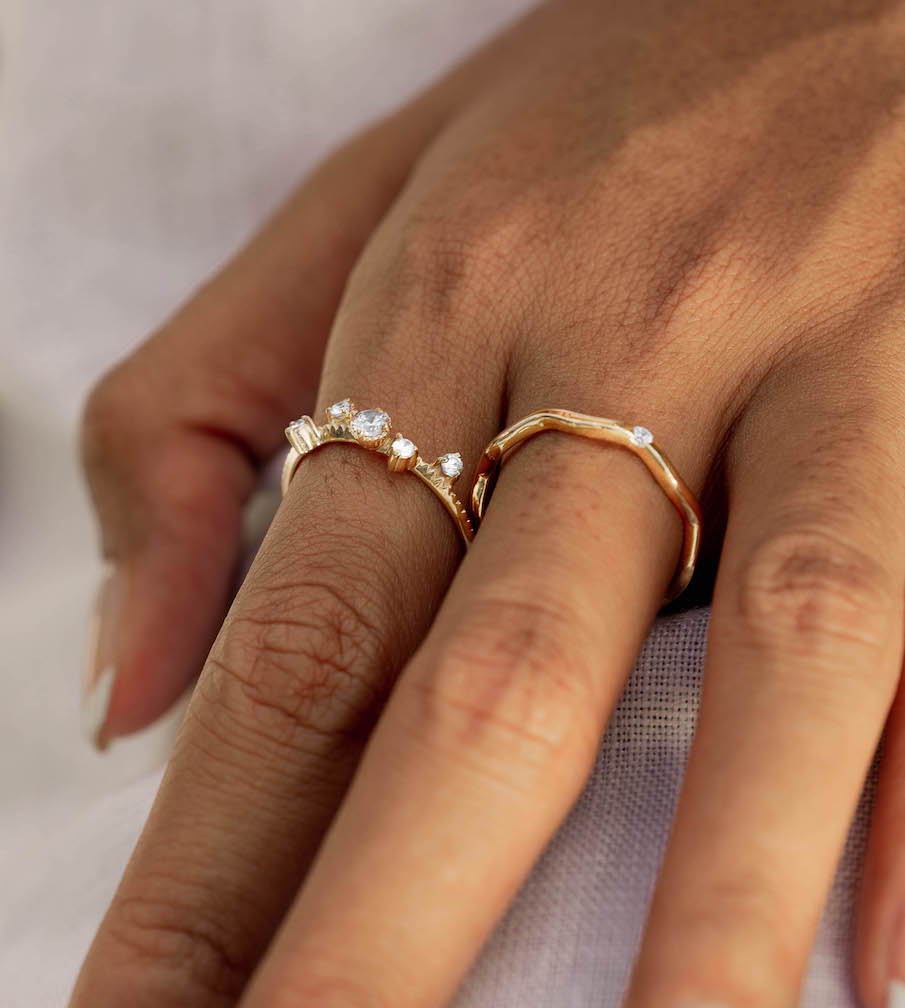
$76 billion US
in sales
In 2018, the value of the diamond jewellery market was $76 billion U.S. dollars.
This was an increase of $2 billion U.S. dollars from 2017 and it will grow, on average, by 8% for the next five years.
Where do mined diamonds come from?
The majority of the world’s diamonds come from three countries:
1. Russia
43 millions carats
of diamonds
in 2018
2. Botswana
24.4 millions carats
of diamonds
in 2018
3. Canada
23 millions carats
of diamonds
in 2018
The remaining countries are Canada, Angola, South Africa, The Democratic Republic of Congo and Namibia.
What are the different methods for mining diamonds?
There are three key methods:
1. Pipe mining
Pipe mining © Stapanov Alexander
Large amounts of earth are removed to find diamonds.
2. Alluvial mining
The Abaeté River mine in Brazil. © GIA
Water is extracted to source diamonds from areas such as riverbeds. This requires a wall or diversion, then once the water is drained out, the soil is extracted.
3. Offshore mining
Offshore mining © Aislinn Laing
Ships have pipes or vacuum tubes and high-tech equipment are used in deep-sea mining for off-shore extraction.
What is the impact of diamonds mining?
‘A few industries in the world have a larger environmental and social footprint than mining’.
The Use of Water
The exhaustive amount of energy used for diamond mining is linked to the direct pollution of surrounding water systems.
Water and energy are two of the key issues with waste management in diamond mining.
On average, mined diamonds consume around 480 L of water per carat! In comparison, lab-grown diamonds “only” require 70 L per carat.
mineral waste
Mineral waste is created during the extraction process and then disposed of through a waste management system, in the best case scenario…
Most of the time, this waste is a threat to the environment and poses major contamination risk for the surrounding ecosystems, especially to groundwater and rivers.
air pollution
Mined diamonds often produce a chemical called Sulphur Oxide, which is very harmful, not only for the environment but also for the communities living around the mines.
Moreover, on average, mining one carat of diamond produces 65 kg of CO2, much more than lab-grown diamonds (12kg in average).
Groups of miners in the diamond fields in Marange. © Associated Press
Human Rights
The diamond mining industry still fuels a wide array of human rights abuses.
Its supply chain is often very opaque and is a source of conflicts and serious human rights violations, as highlighted recently by Human Rights Watch and Amnesty International.
One of the main issues is the traceability of the diamonds when experts agree that a diamond will likely change hands eight to ten times from the country of export to the final consumer.
In 2018, 147 million carats of mined diamonds were estimated to have been produced globally.
And the demand might reach 292 million carats in 2050.
Sustainable alternatives are definitely needed!
What are lab-grown diamonds?
Lab-grown diamonds are diamonds cultivated in a laboratory using the latest technology.
They are man-made and consist of the same chemical composition as mined diamonds.
Cultured diamonds arouse suspicion and questioning, yet during the summer of 2018, the Federal Trade Commission that regulates commercial practices amended its jewellery guide to remove the word natural from the definition of diamond.
It continues by clarifying that "it is no longer accurate to define a diamond with the word natural when it is possible to create a product which has essentially the same optical, physical and chemical properties as a mined diamond."
In summary, lab-Grown Diamonds display the same beautiful physical look as mined diamonds. The sparkle without harming the planet.
So, how are lab-grown diamonds made?
What are the benefits of lab-grown diamonds?

Sustainability is one of the many positive benefits of purchasing a beautiful lab-grown diamond.
TRANSPARENCY
There is a higher level of transparency for consumers.
Research shows that even the biggest of brands do not always have a clear idea of where their diamonds come from. This is due to a complex supply chain that operates all over the world. Lab-grown diamonds go directly from the lab to the jewellery workshop, no more middle men.
Scéona brings you a collection of jewellery inspired by nature and simplicity, using only lab-grown diamonds.
The sparkle without hurting the planet.

